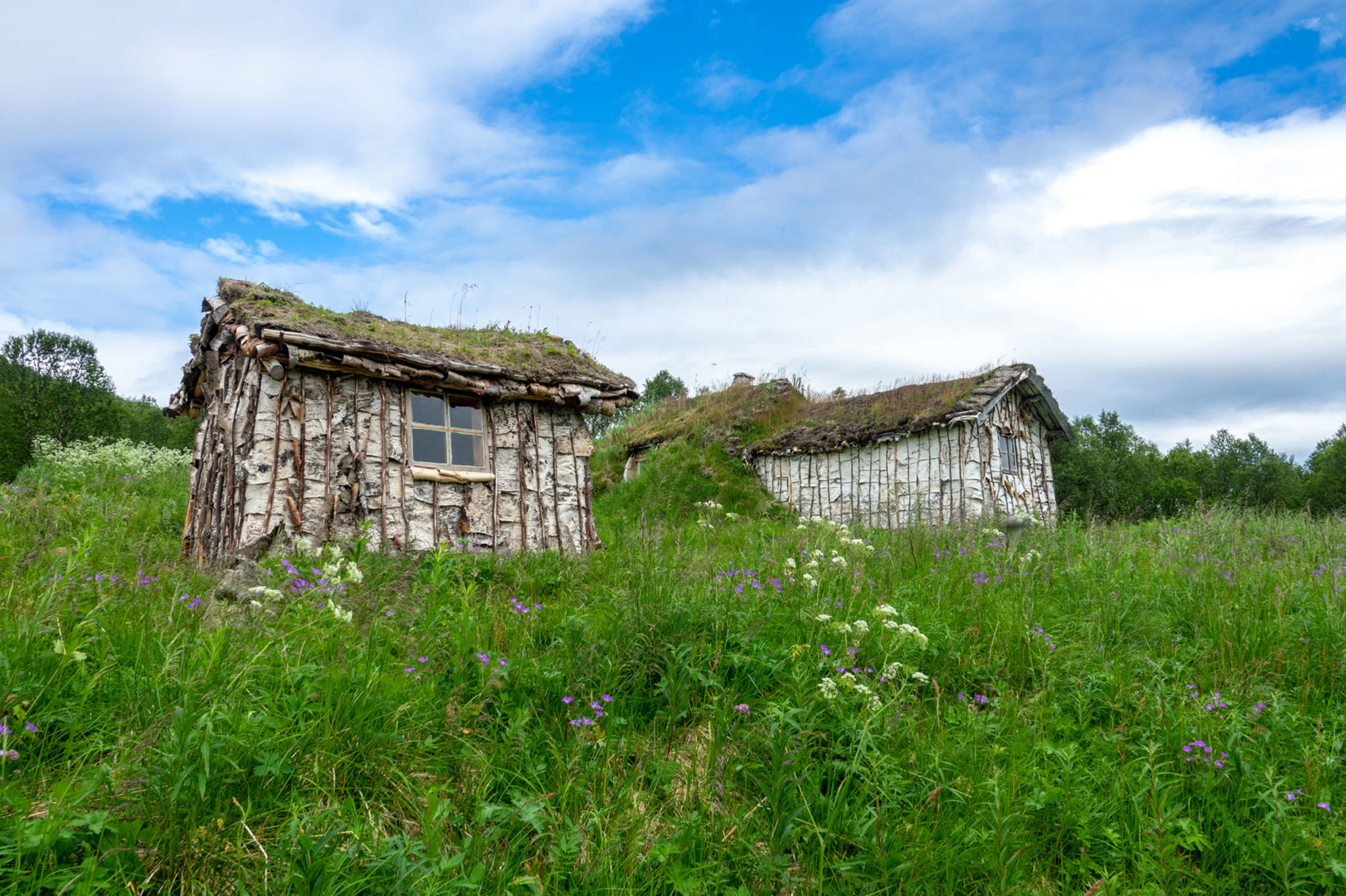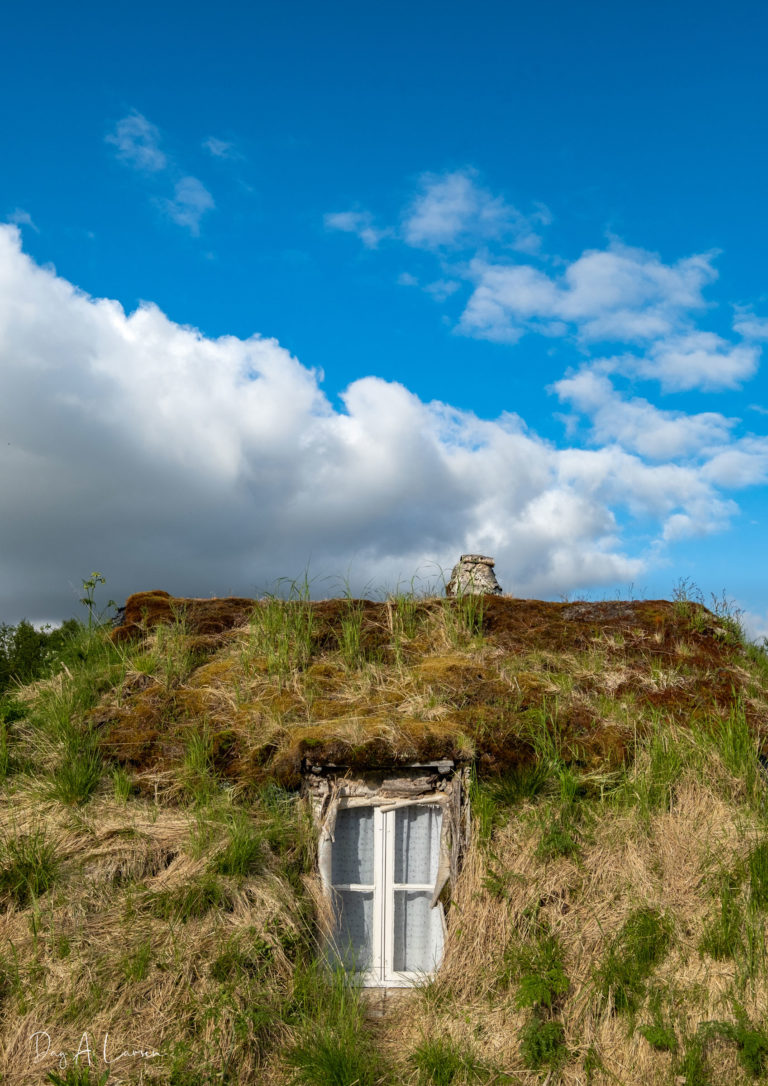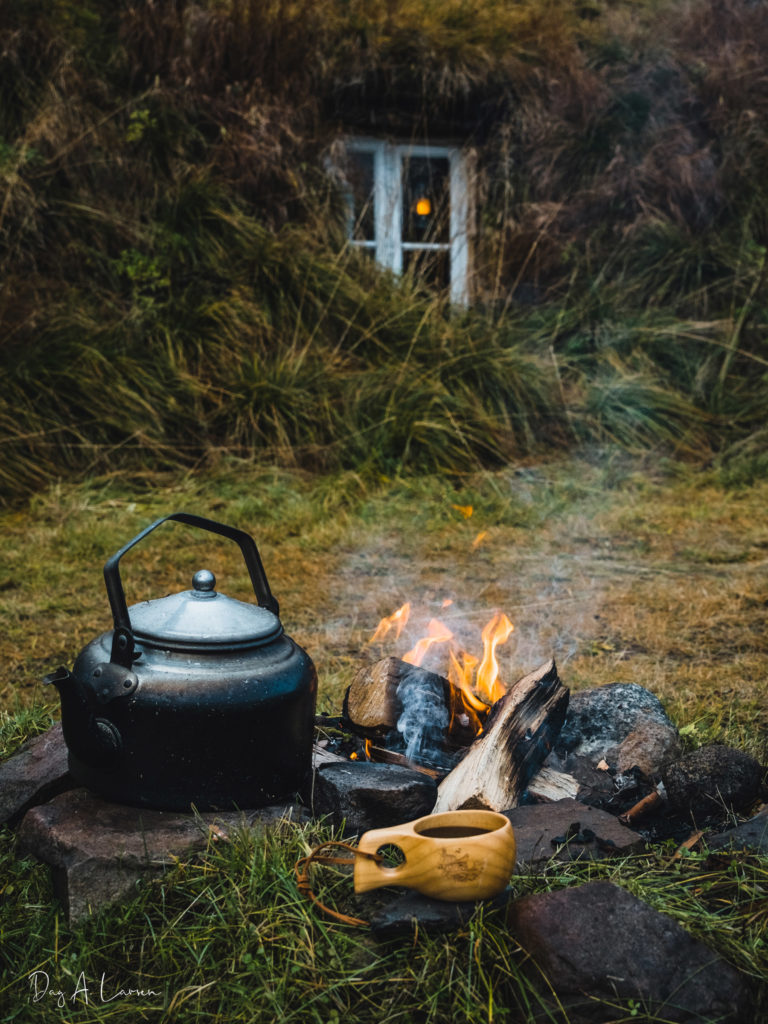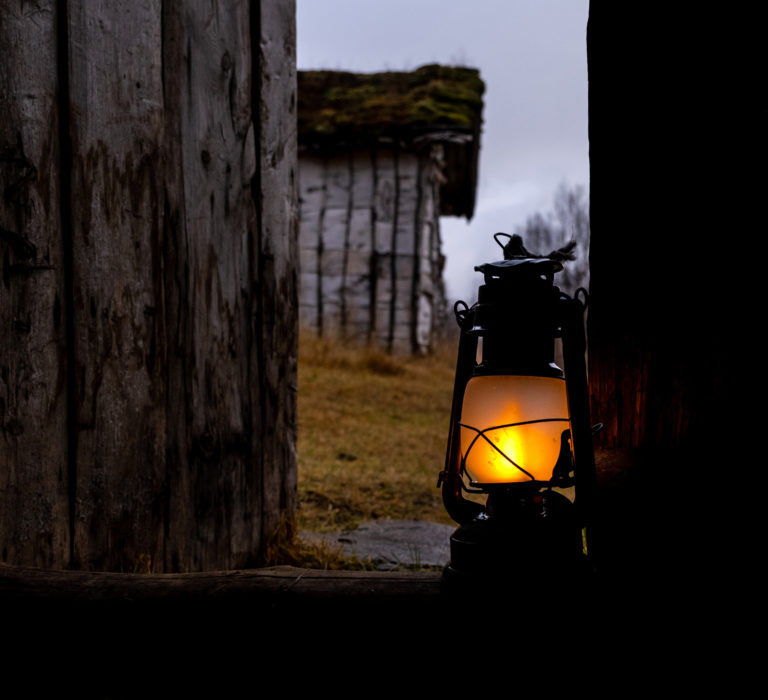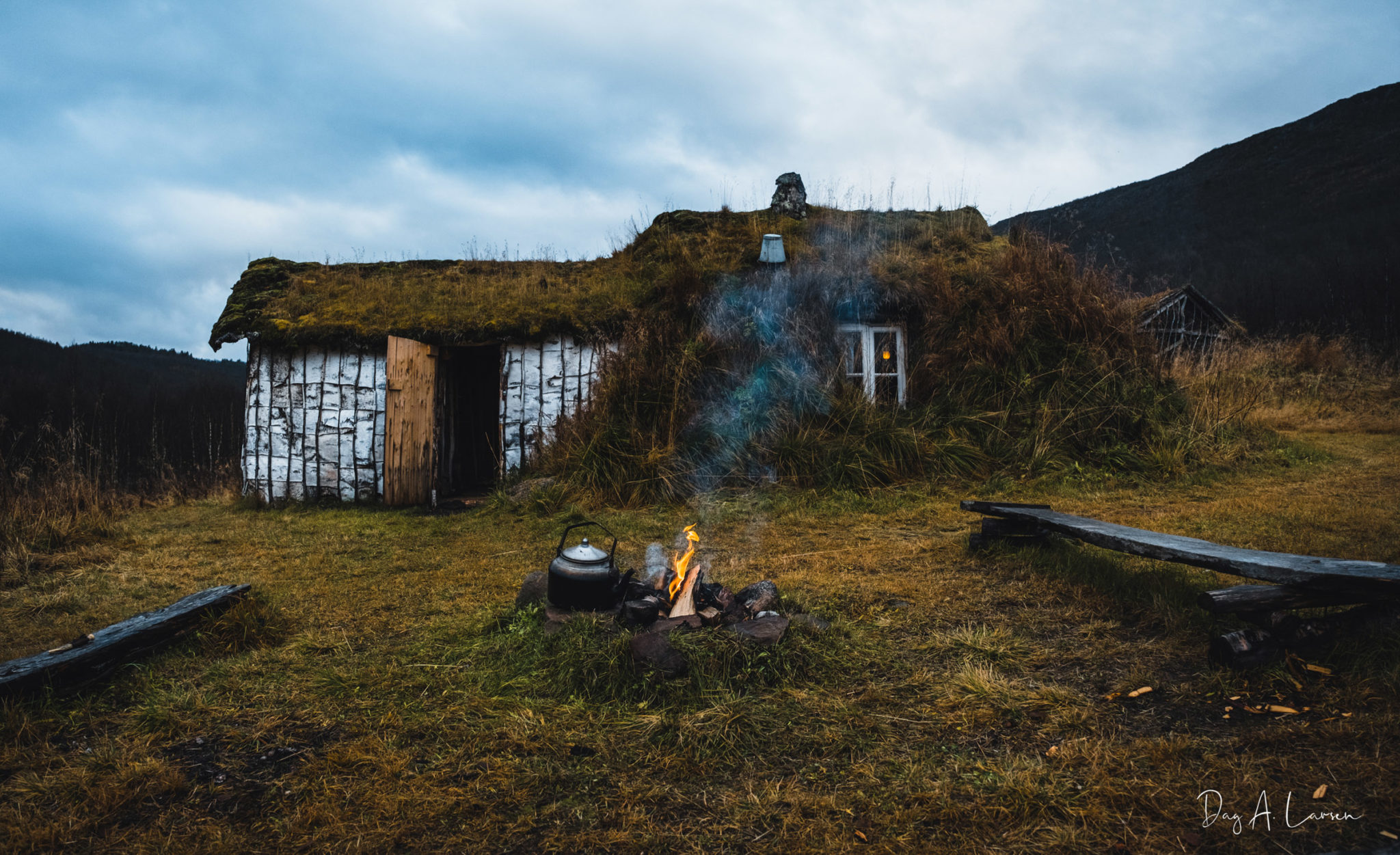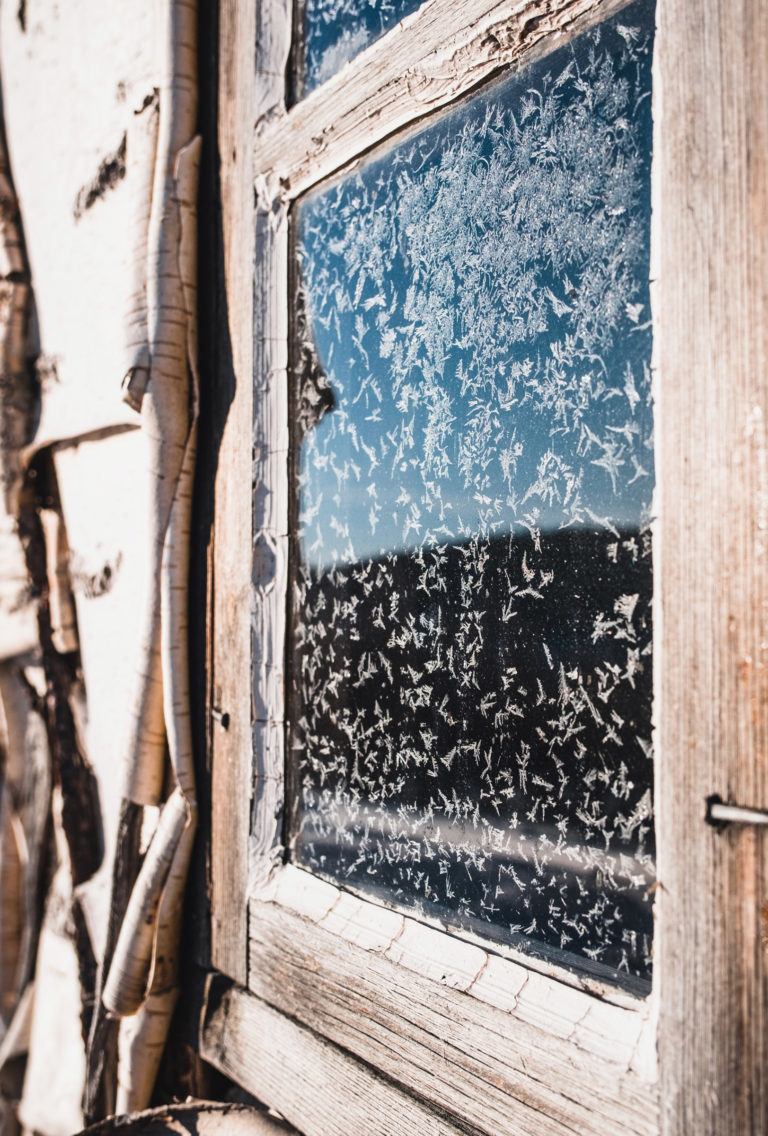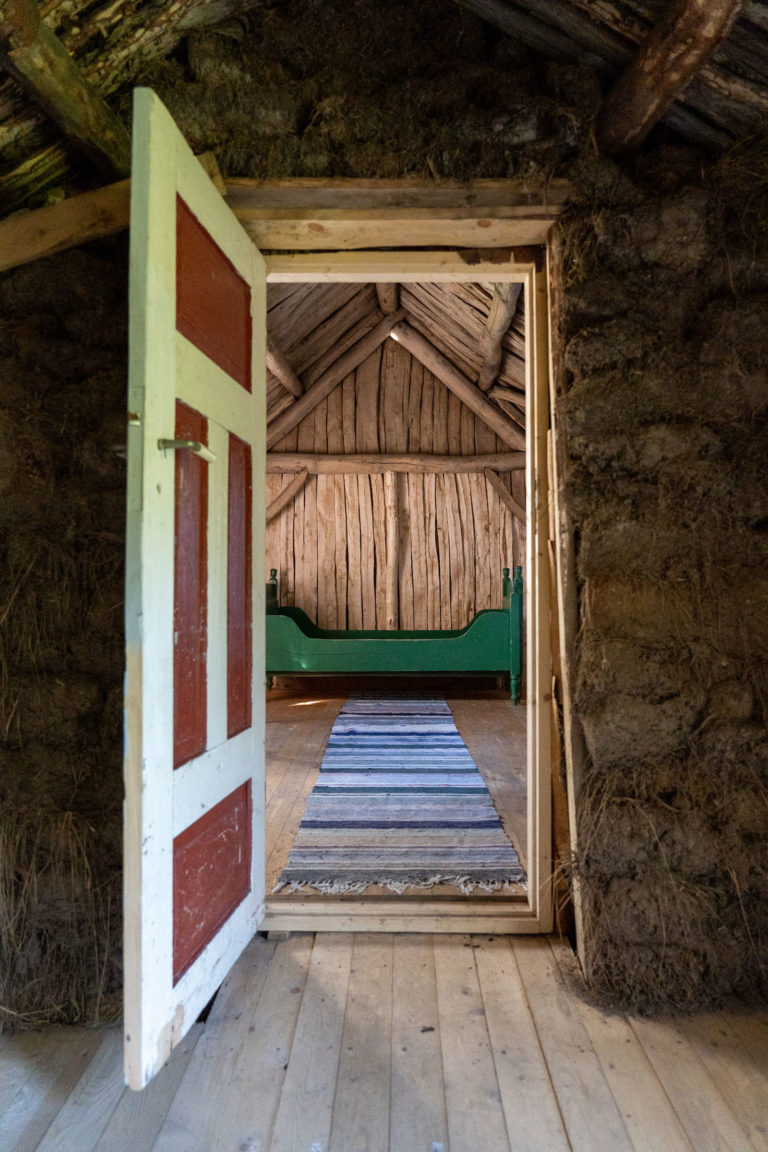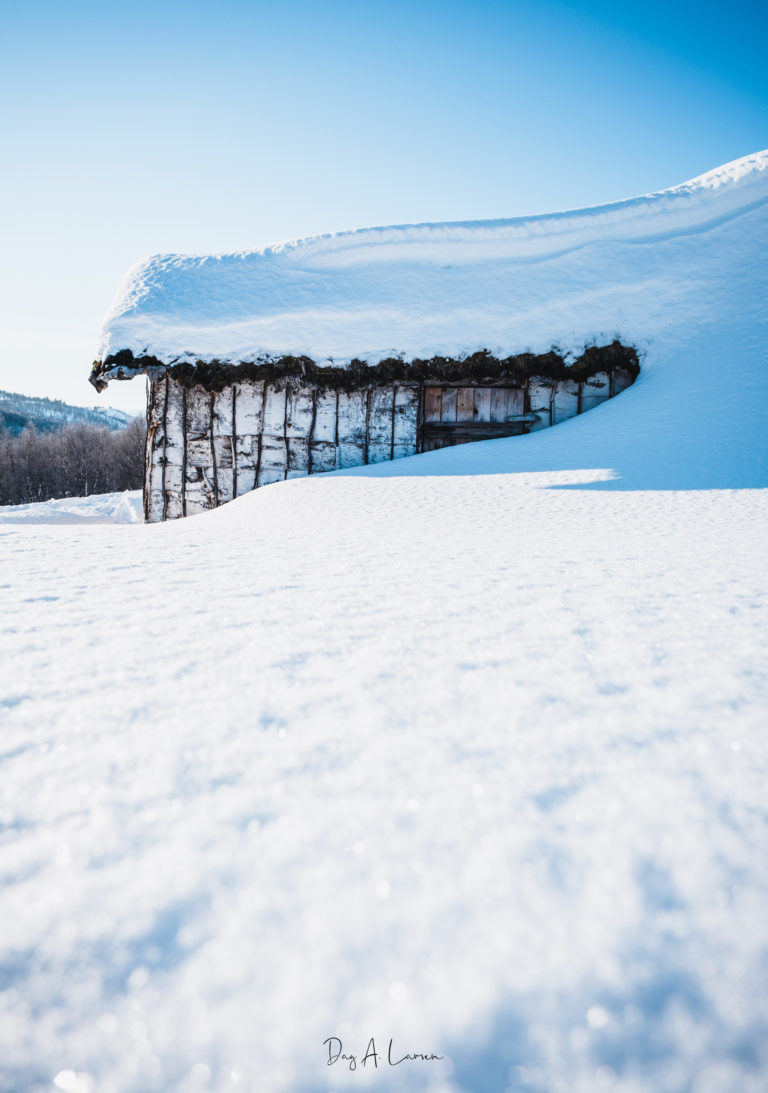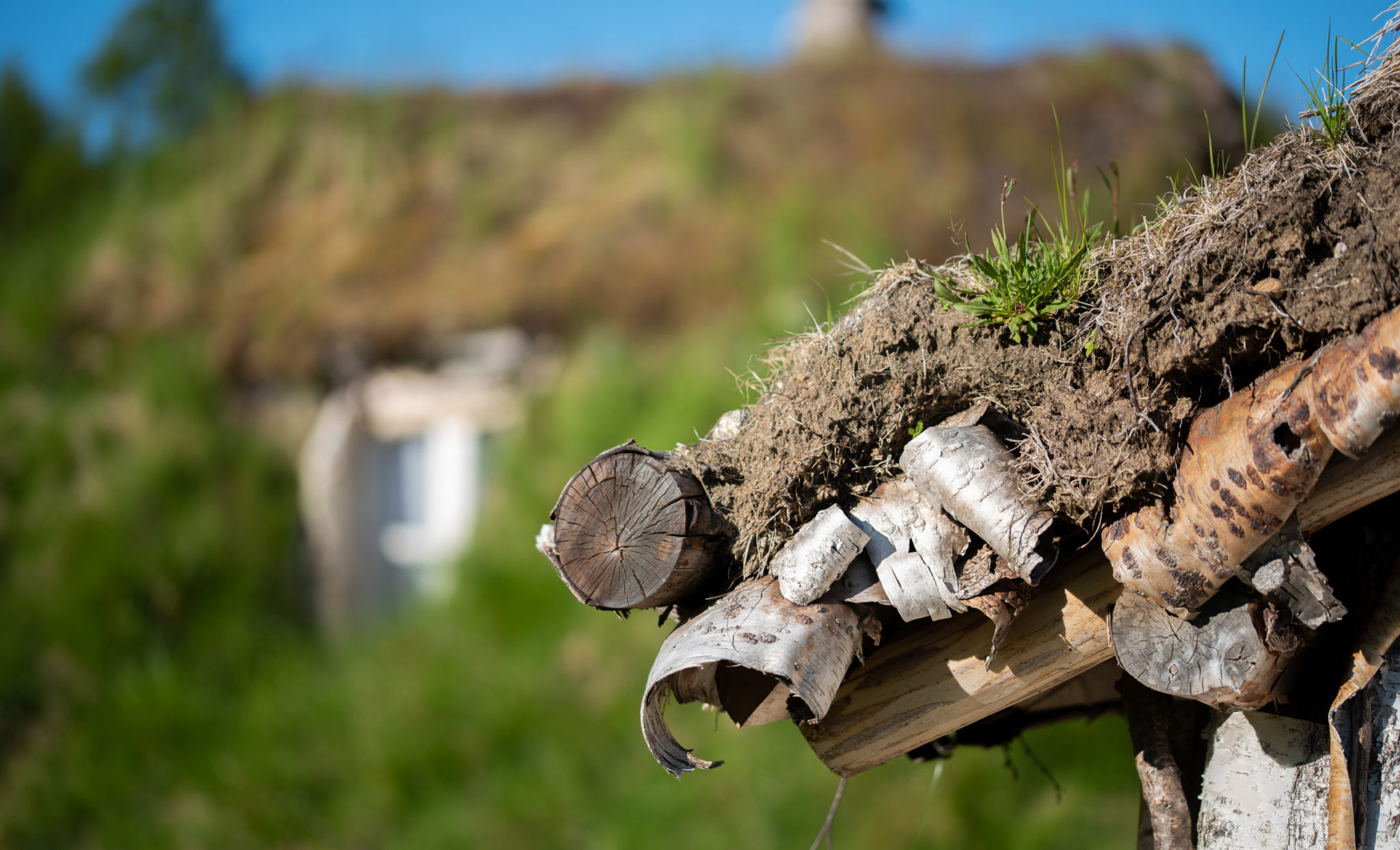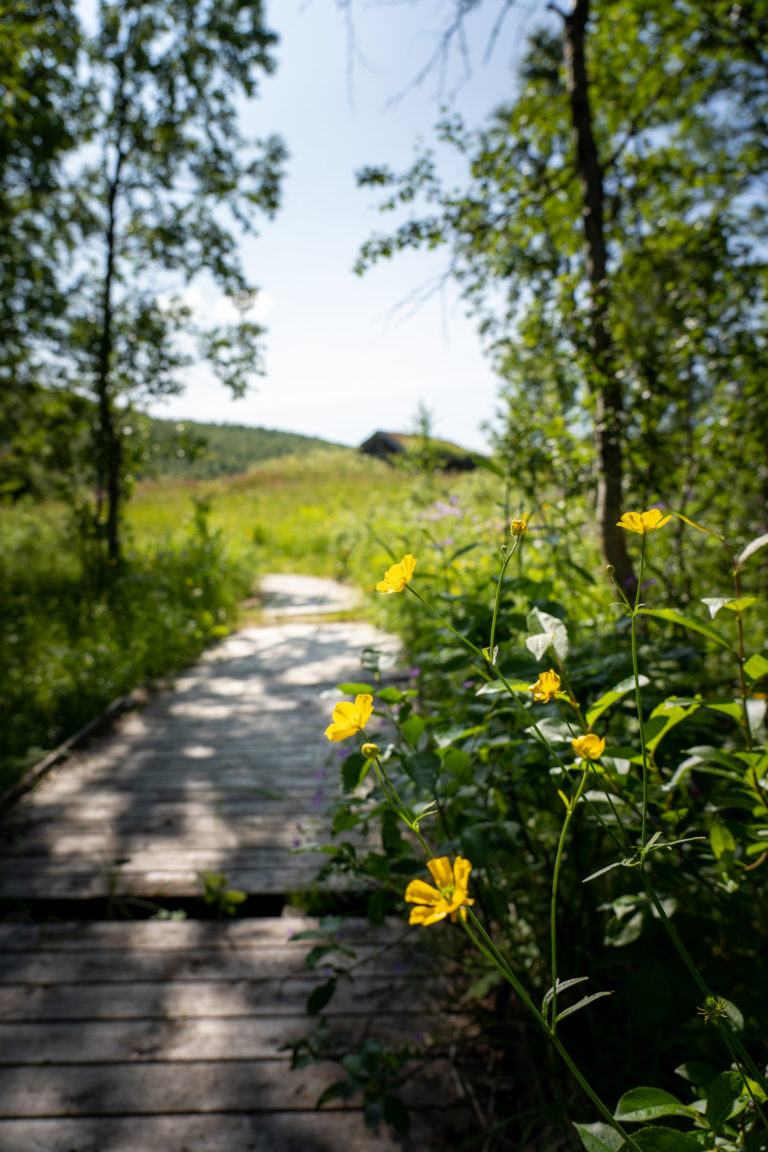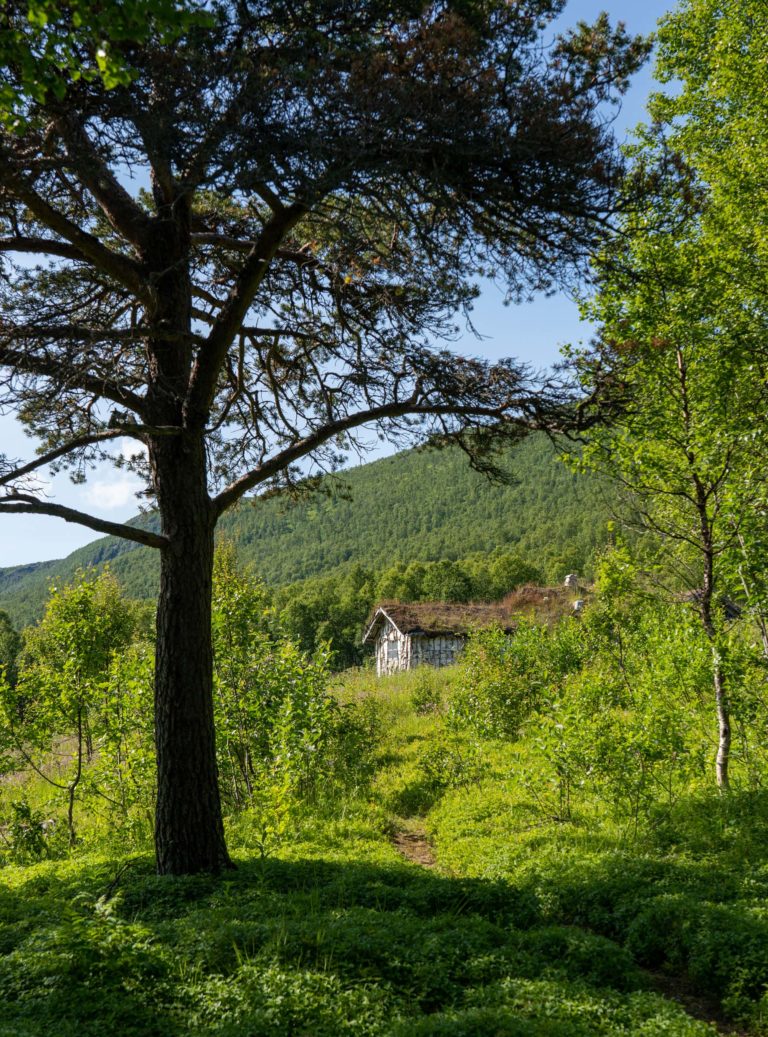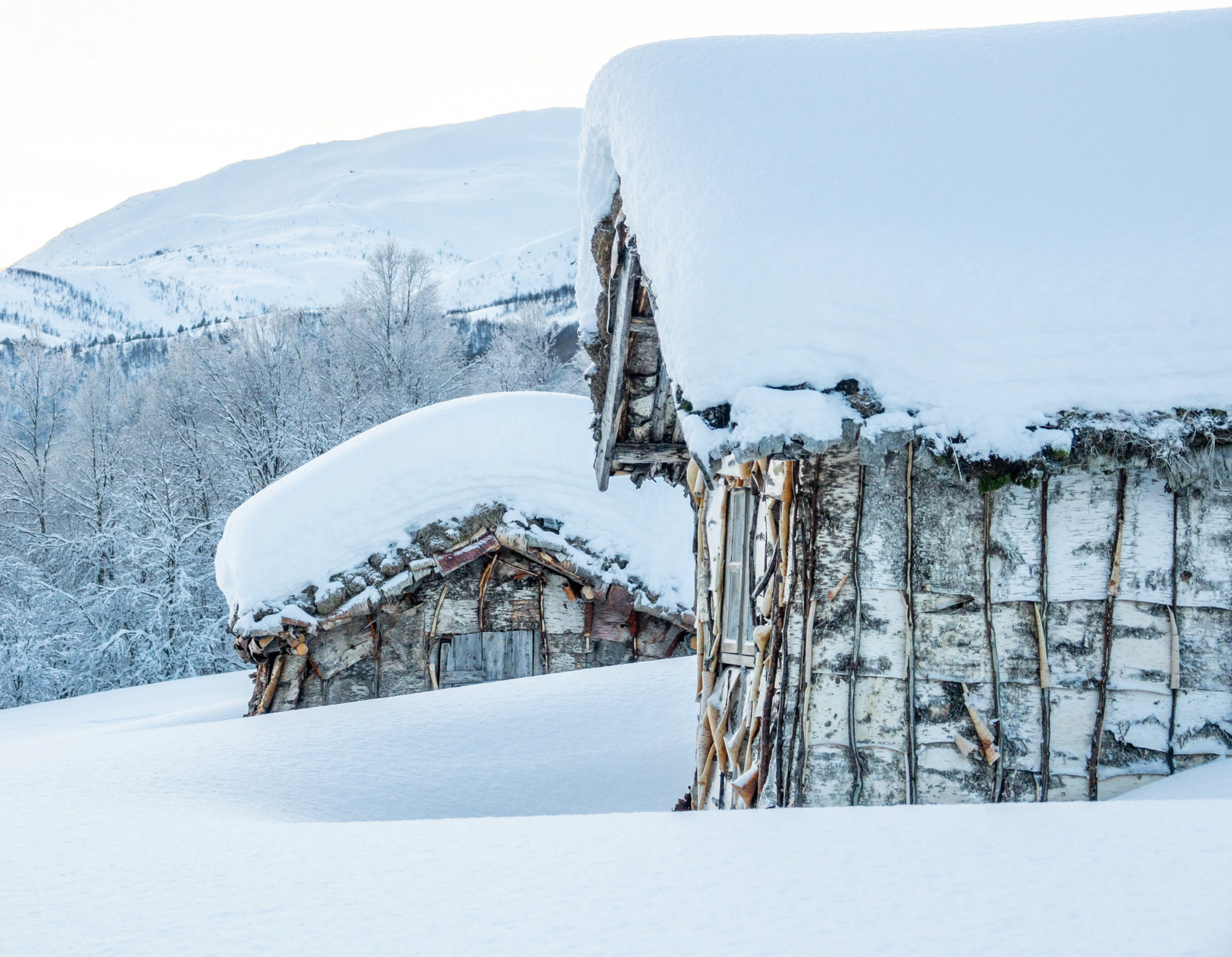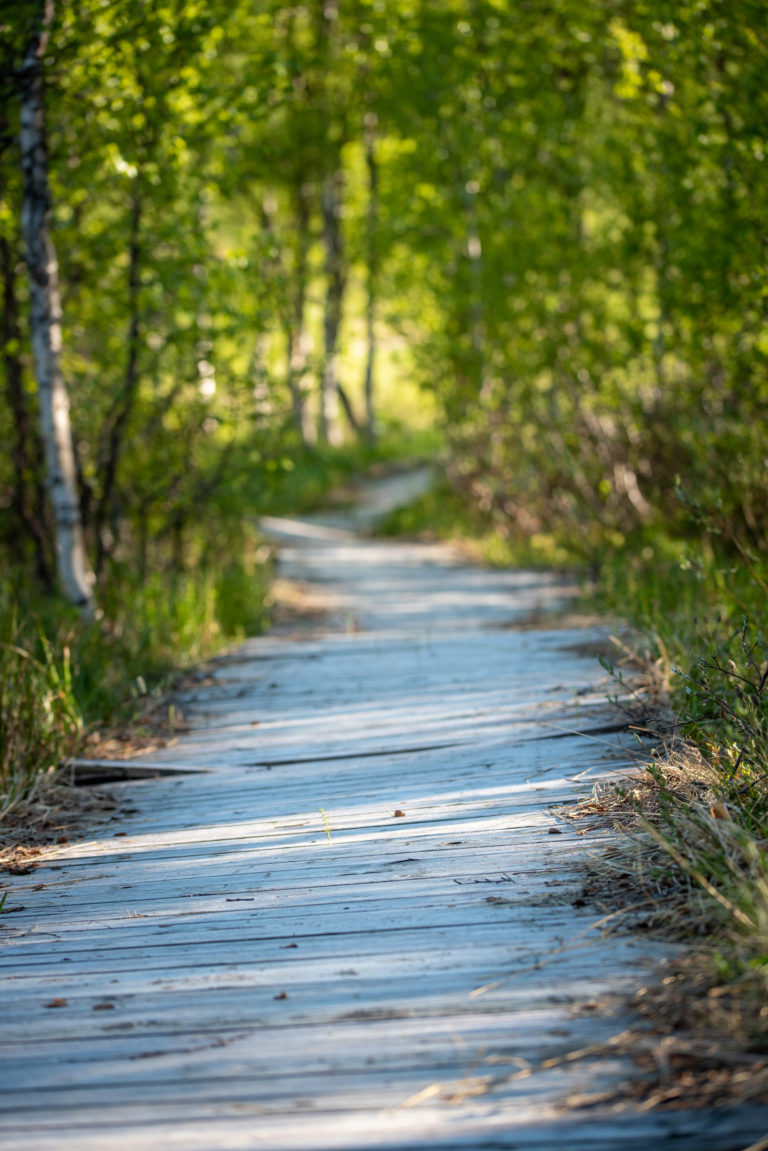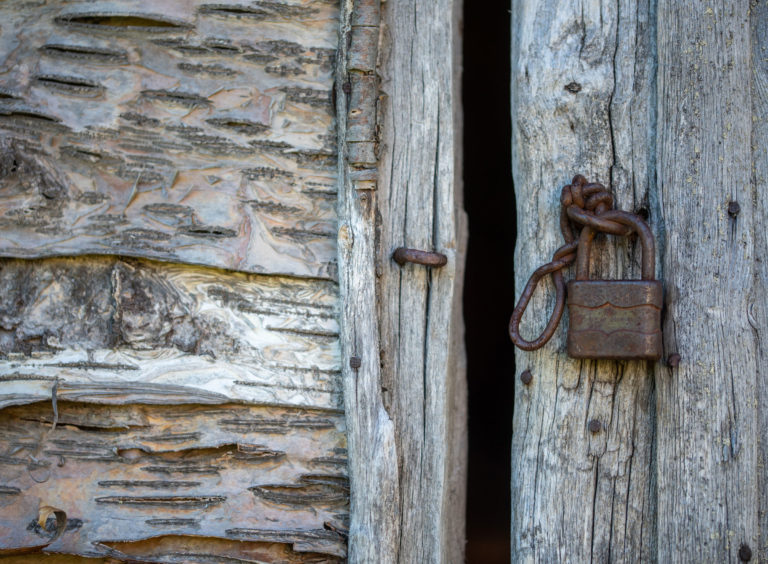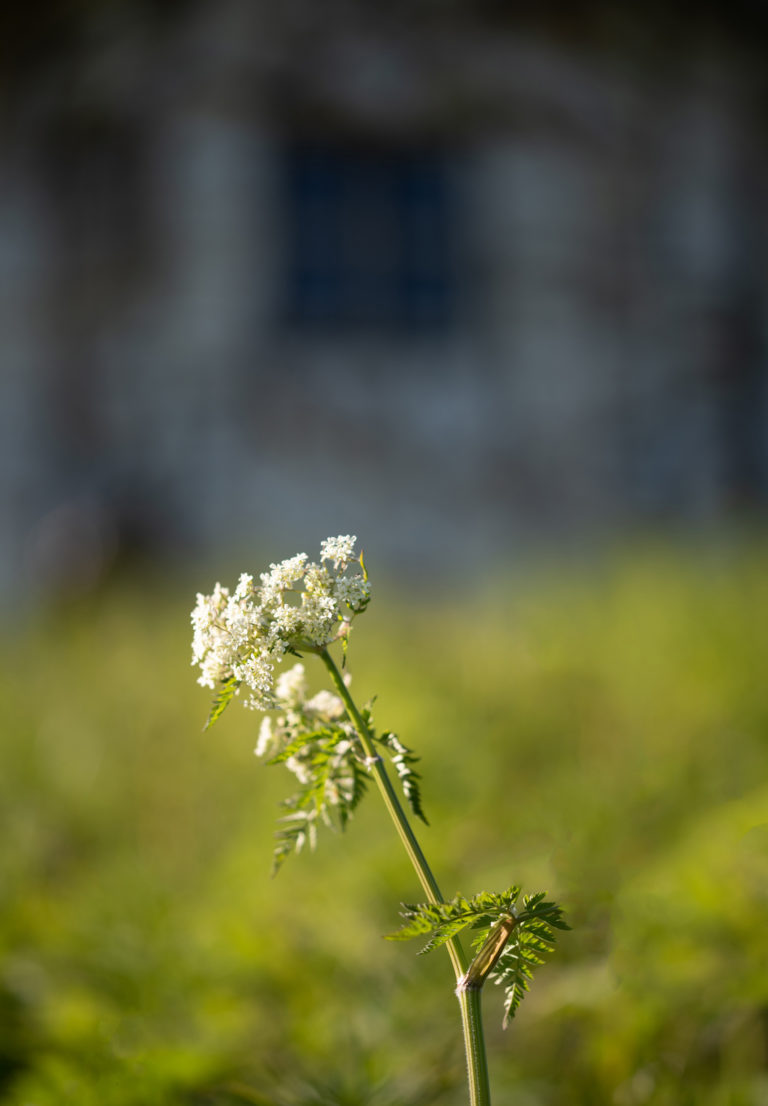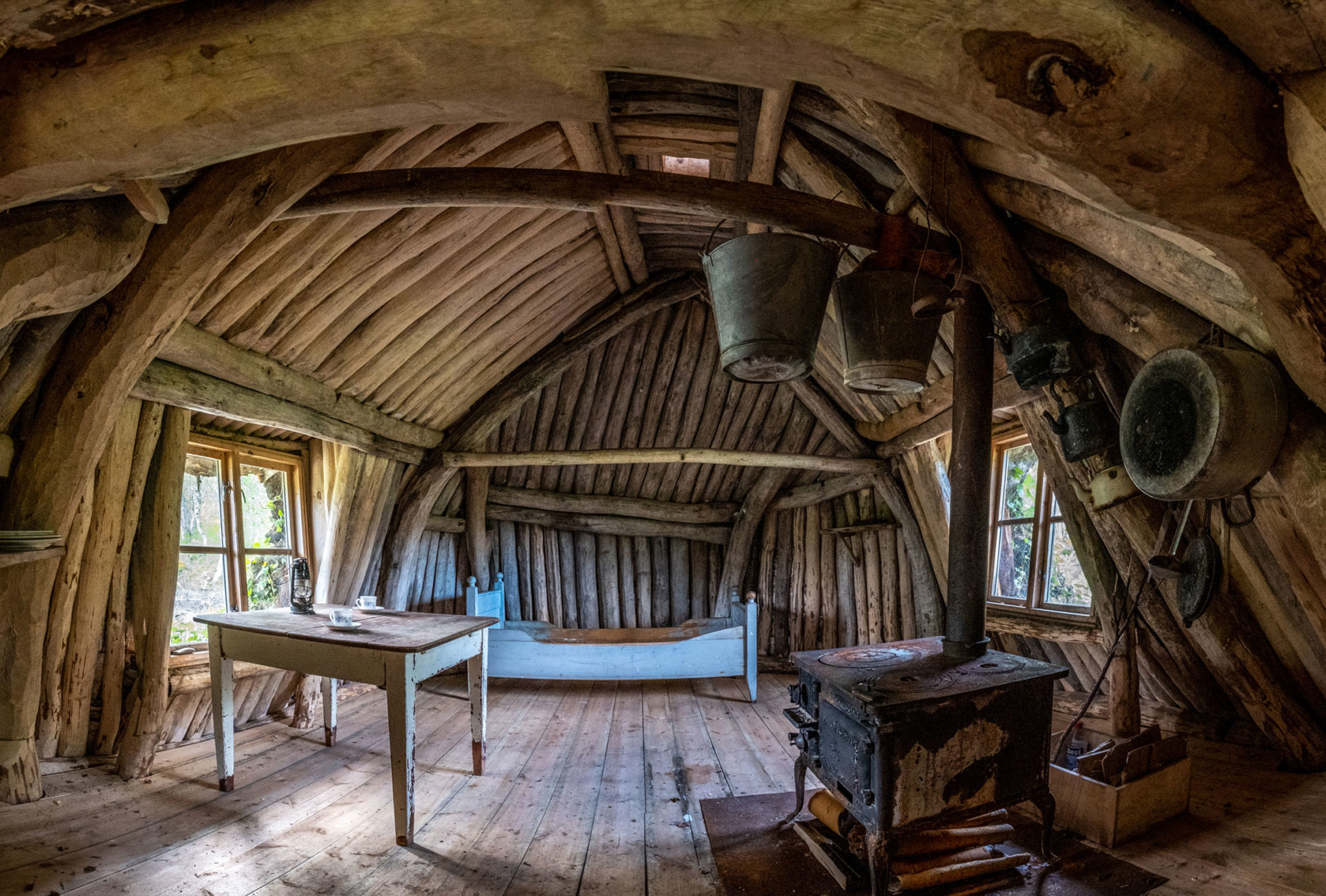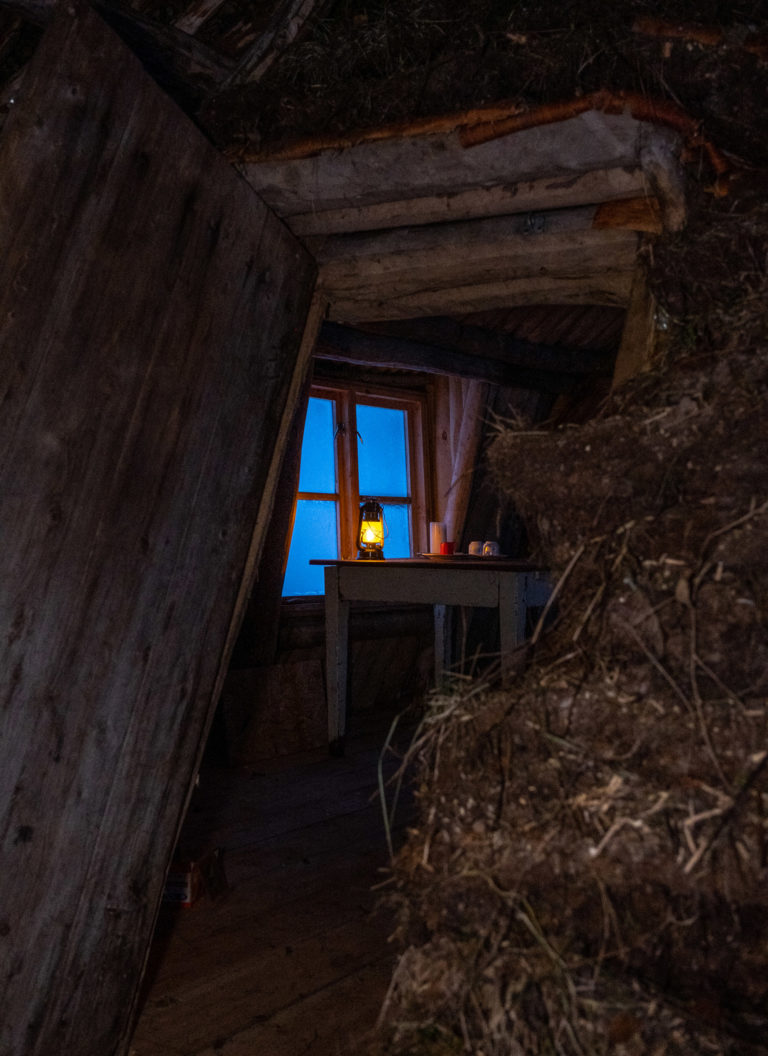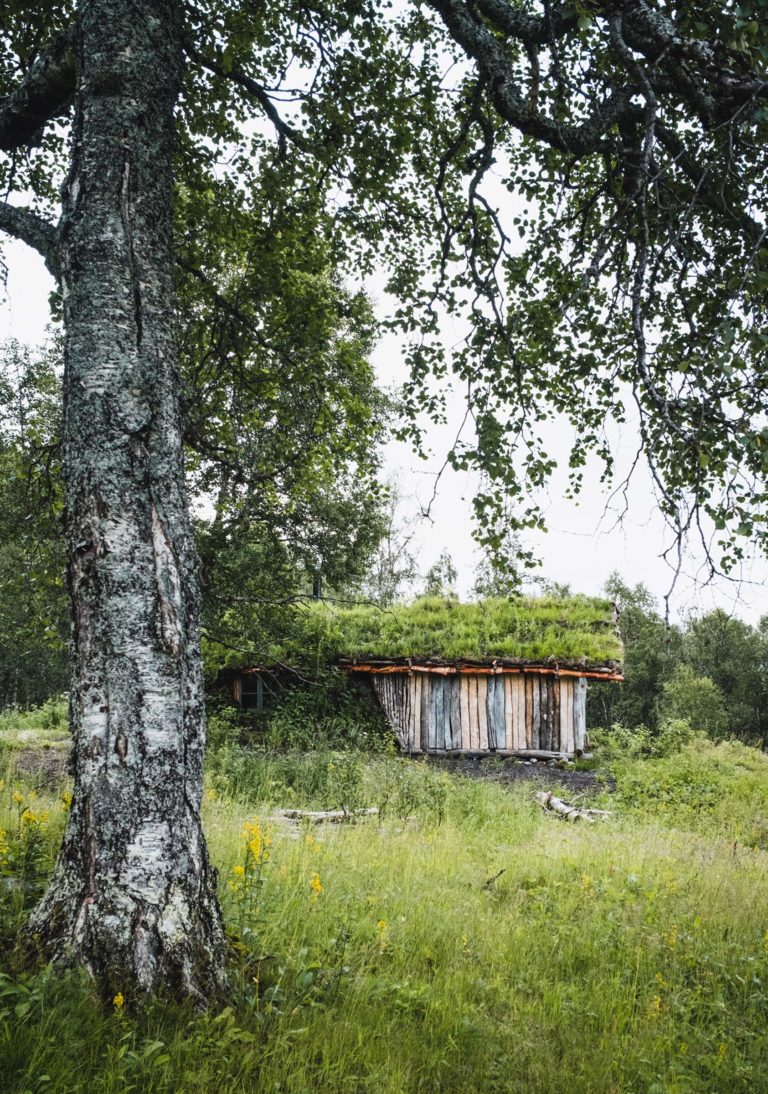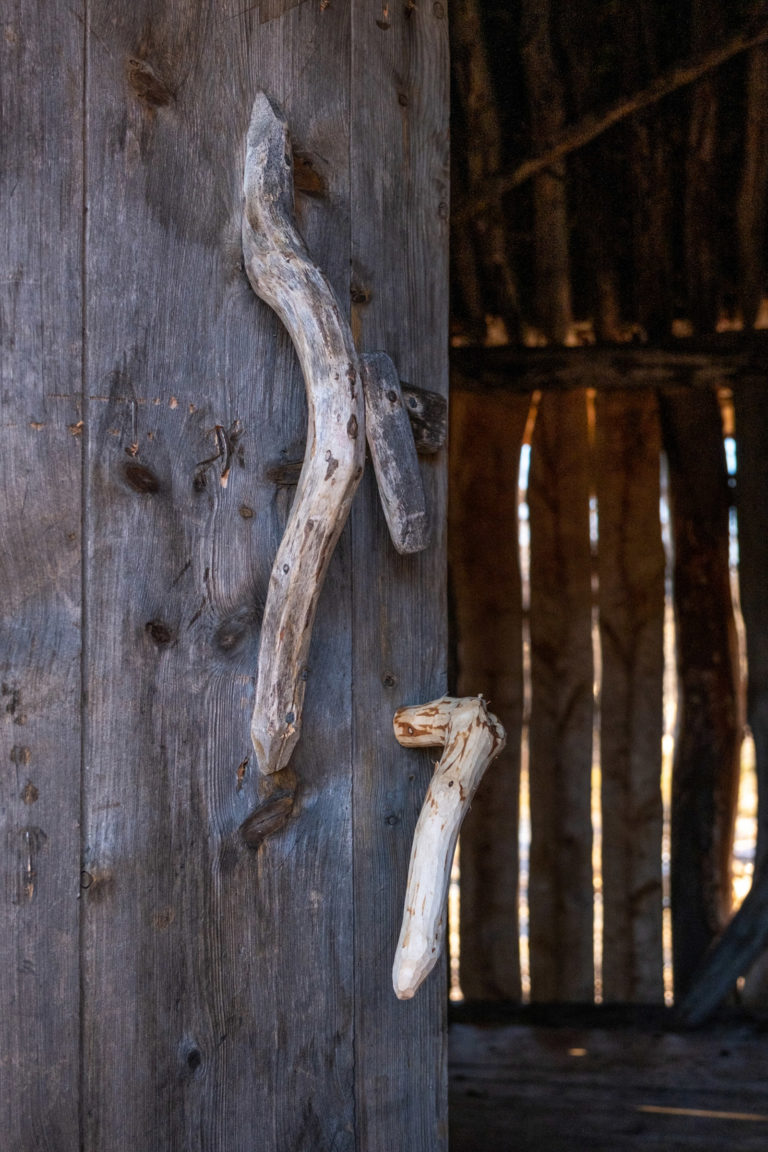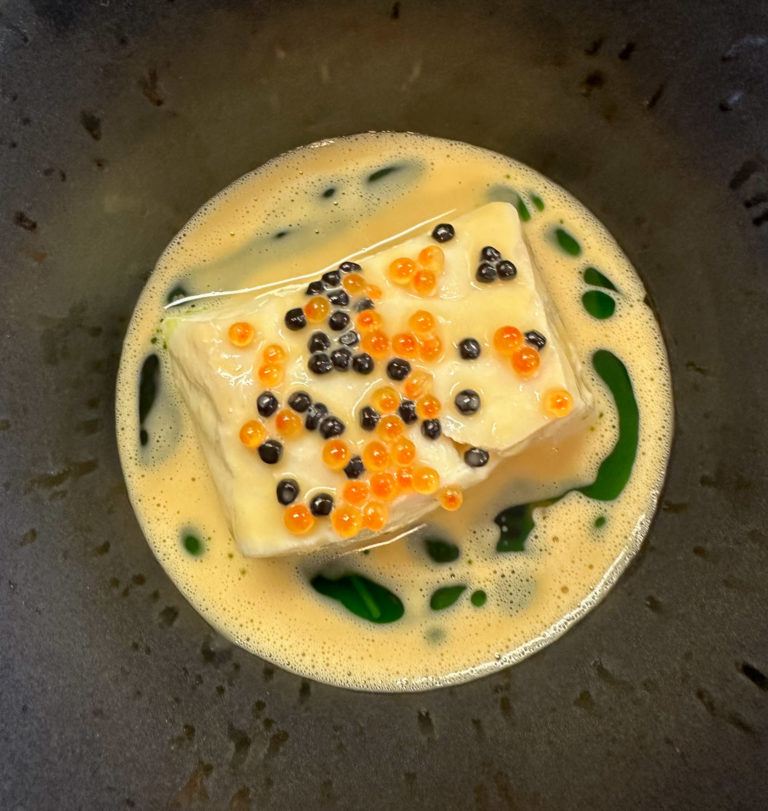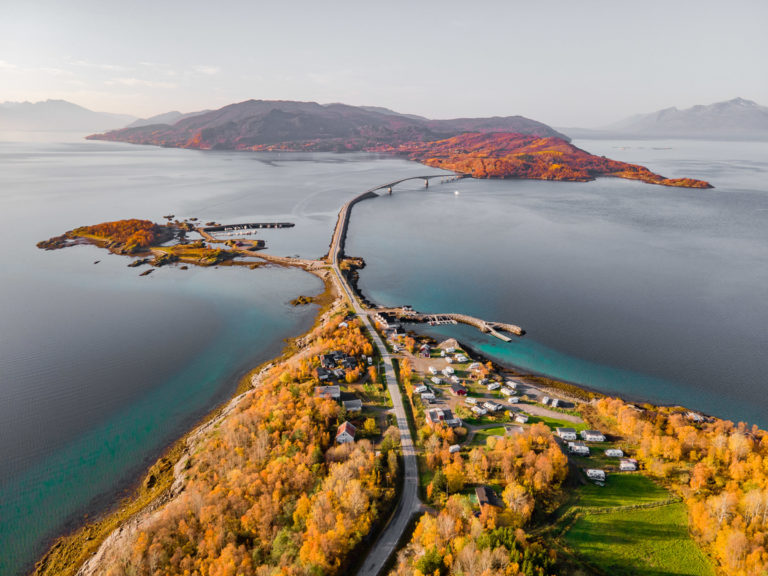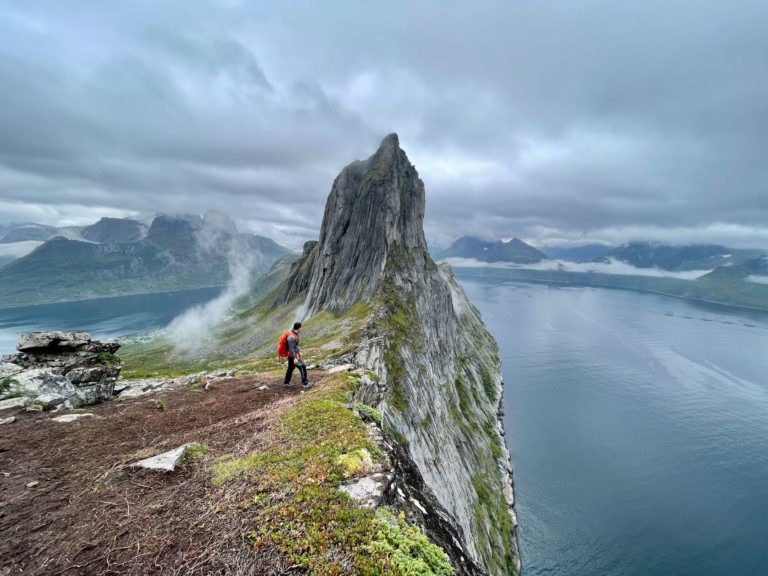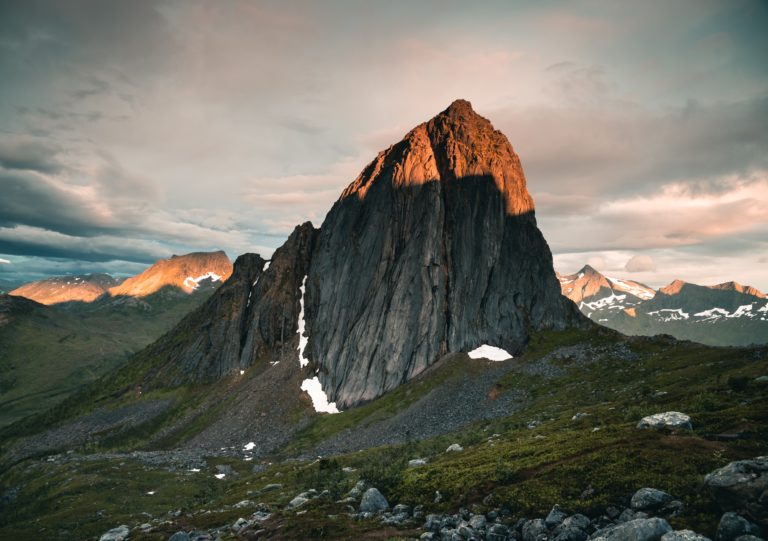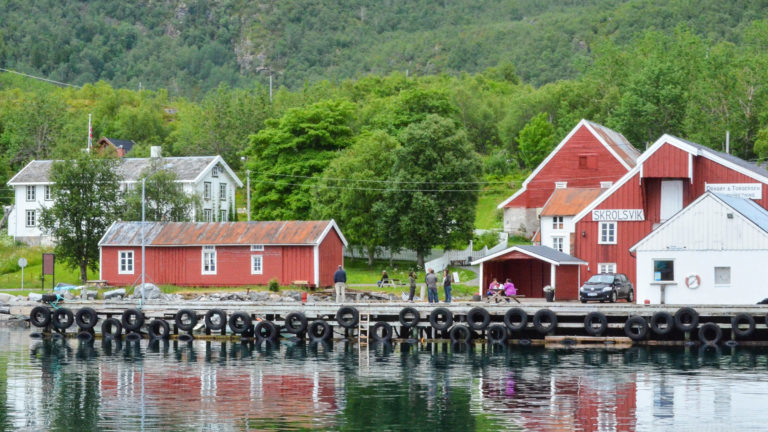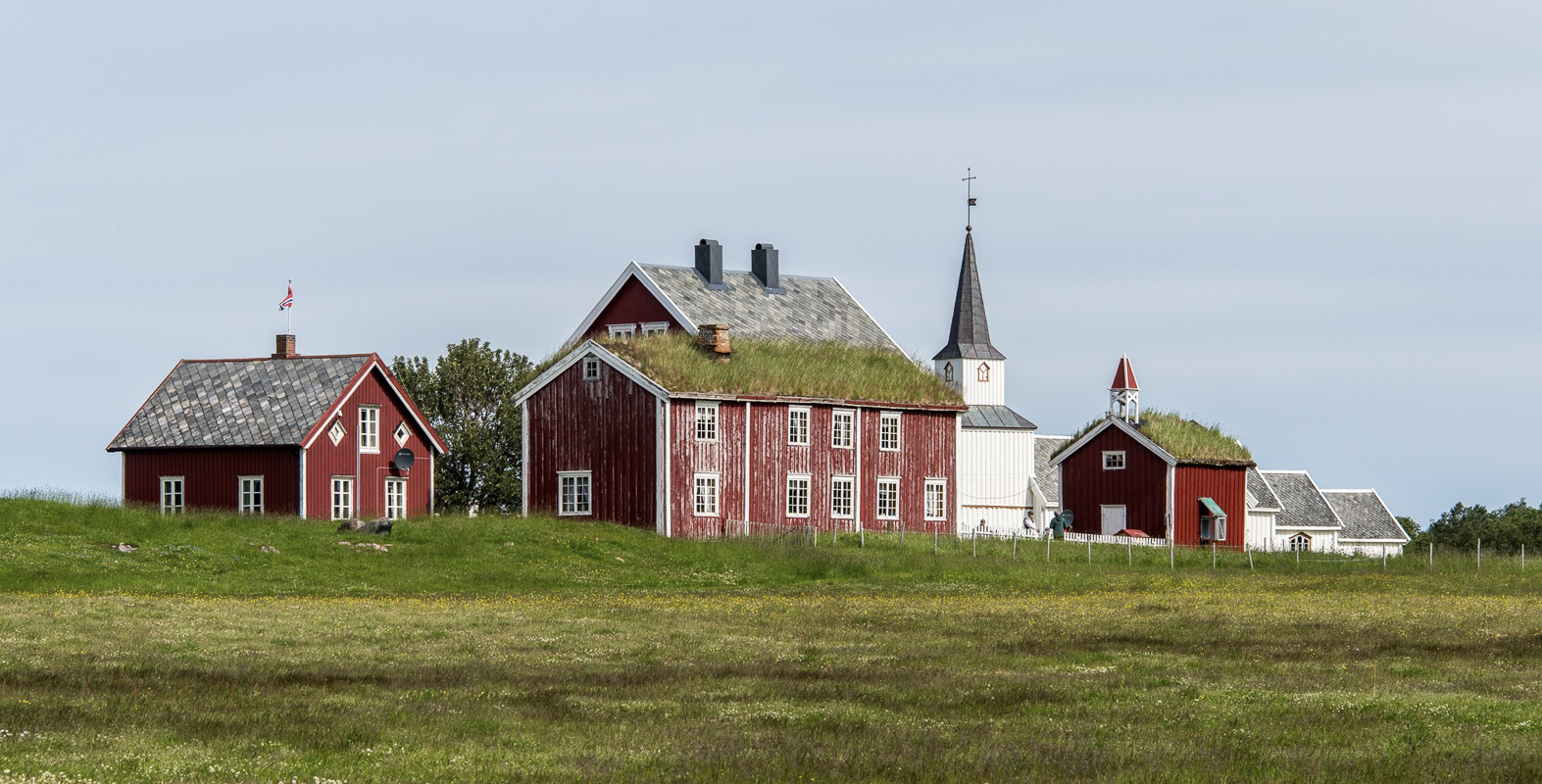I had stopped the car in the Kaperdalen valley, in Senja’s forested inland. The trees were clad in the bright green of early summer, the birds were singing, and the Lakselva river was roaring in flood somewhere behind the trees. The forest opened to a meadow, and in the middle some strange buildings seemed to grow right out of the ground. This is the Nikolaigammen – Nikolai’s turf hut – one of the last turf huts anyone lived in permanently in Northern Norway. The hut is divided into two parts; the nucleus itself is a slightly elongated rectangular turf construction upheld by a simple log structure. An extension with a turf roof and vertical bark-covered wooden walls forms an entryway .
A turf hut is a modest home
I stepped into the cabin through the entryway. To the left, I glanced into a wood store and an empty storage room. On the right, another door led through thick turf into the living room itself. It is the epitome of minimalism; a green trundle bed towards the other end, an oven and a red-painted rocking chair to the right and a small kitchen table to the left. A window is sat deeply into the turf on each long side, letting in the summer’s day. Debarked logs carry the turf roof and keep the side walls in place. My immediate thought was “that’s it?”. And the next was, “people actually lived here?”. But they did, and look at us from faded, framed photos on the wall.
Two other buildings complete the farm
In addition to the main house, there is also a woodshed made of debarked logs and covered with bark. It also has a turf roof. The little barn further up collapsed a few years ago and will be rebuilt again within the next few years. It all belonged to a Sámi farm that was cleared around 1900 by a Sámi couple, the upper most of several Sámi farms in the valley back then.
Nikolai is the best-known resident of the house
Nikolai Olsen Kaperdal was born on the farm in 1905. When he was 15, his father died, and he had to take on many responsibilities. Deeply rooted in Sámi traditions, he was not afraid of trying new things. He participated in the Lofoten fishery and raised horses for sale. In 1929, he bought a T-ford, and operated a taxi service in the area as the very first on Senja. He was thus a person of note locally. As most Sámi people, he had to endure derogatory, offensive remarks because of his ethnicity. During the second world war, he was caught by the occupying forces listening to the radio, which was forbidden at the time. With local helpers, he managed to escape to Sweden. This drama traumatised him for the rest of his life.
Nikolai lived together with Alvilde in the woodshed
Nikolai’s private life was extraordinary for the time. He rode in a motorbike to Tranøybotn to fetch his beloved Alvilde from her home and marriage. After a quarrel with Nikolai’s mother, still living in the house, the loving couple moved into the woodshed, where they installed an oven. The two, despite never marrying, stayed together their whole lives. In a traditional community, this was highly unusual. Nikolai died in 1986, and Alvilde soon after in 1987.
Turf huts can be built for free
A goahti – gamme in Norwegian – is a house made of turf. These houses have a long and illustrious history in the north and go all the way back to the stone age. As opposed to wooden houses, one could get all the materials from nature at no cost. There are different kinds of them, and the Nikolaigammen is a typical nordmannsgamme – “Norwegian gamme”. It has a rectangular shape around an inner structure reminiscent of a log house, hence the name of the structure. It is then covered with turf, giving good insulation and stability to the structure. There is another goahti further up the valley, in Øverkaperdalen, which is has an oval shape more in line with traditional Sámi architecture. This is not yet possible to visit.
A goahti lasts for thirty years
Nikolai and Alvilde moved away from the goahti in Kaperdalen in 1963 to a regular house further down the valley. They were among the very last in the Sámi area of Northern Scandinavia to leave traditional housing permanently. Still, their summers would be spent in the goahti for many years. A goahti needs to be kept up regularly. But after about 30 years, a goahti has to be taken down and renovated thoroughly. When the little farmstead was converted into a museum in the 1980ies, Nikolai was still able to act as a counsellor when the house was once again rebuilt. The transfer from homestead to museum was thus uninterrupted, which is unique.
Who are the Márkosámiek ?
This particular group Nikolai belonged to within the Sámi community is called Márkosámiek in their own dialect of Northern Sámi. That would be Márkosámit in standard Northern Sami and Markesamer in Norwegian. They originate in the northernmost parishes in Sweden, Jukkasjärvi and Karesuando. To start with, they were nomads bringing their reindeer from the winter areas in northernmost Sweden to the summer areas around the fjord of Ofoten and Southern Troms, along with the big islands of Hinnøya and Senja. Bad weather, reindeer diseases or simply better opportunities would over a long period make some herders settle in the summer grazing lands. They became Norwegian officially, but in reality, just changed their lifestyle within their ancestral lands. After all, for them the border was unimportant.
Inner Senja is Márkosámiek territory
The Márkosámiek settled along rivers and lakes in the dense birch forests of Senja starting in the 18th century. They had small farms growing potatoes and keeping a cow, some sheep and goats. Lake and river fishing was important, and the forests offered berries, herbs and small game. Seasonal work in fishing and agriculture could bring in much needed cash. In the 20th century, the small settlements became more alike the surrounding Norwegian settlements, with Norwegian language making inroads. The process was speeded up by the Norwegian state’s policy of forced assimilation, not allowing Sámi to be used in schools. For decades, Sámi culture was hushed up on Senja, but meets new curiosity and interest these days.
Good to know about the turf hut Nikolaigammen
This is one of very few places where we have a goahti/gamme (turf hut) that was lived in until it became a museum. You can visit turf houses like this in many places in the vast Sámi areas, but they have been built recently. This is because goathi/gamme constructions generally only last 30 years. The Nikolaigammen was, however, maintained and reconstructed uninterruptedly until it became a museum. The continuity is therefore the unique point.
The Nikolaigammen is found in the island of Senja’s inland. On one’s way from Finnsnes and the Gisund bridge leading to Senja, one can follow the national road 86 towards Gryllefjord. A little past the inland hamlet of Svanelvmo, one turns left onto the provincial road 232 towards Sifjord/Grunnfarnes. You only drive around a km before there is a sign and a parking on the left side. Pay close attention,
The Nikolaigammen is open for visitors during the summer season. For updated info, consult the website of Midt-Troms Museum. While there, it could be a good idea to browse a little, as there are many other interesting small museums to visit.
A wooden walkway leads from the parking to the museum. This means that most people should be able to get there, also on a wheel chair.
Where do we begin? For updated tourist info, consult the excellent website of Visit Senja Region. Our website meanders more leisurely through Senja.
Visit Senja Region, comprehensively lists all accommodation in the area.
